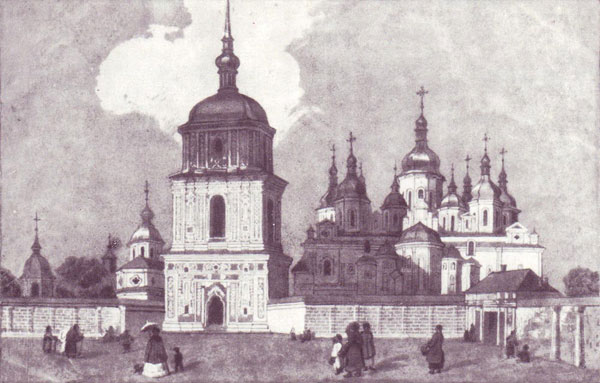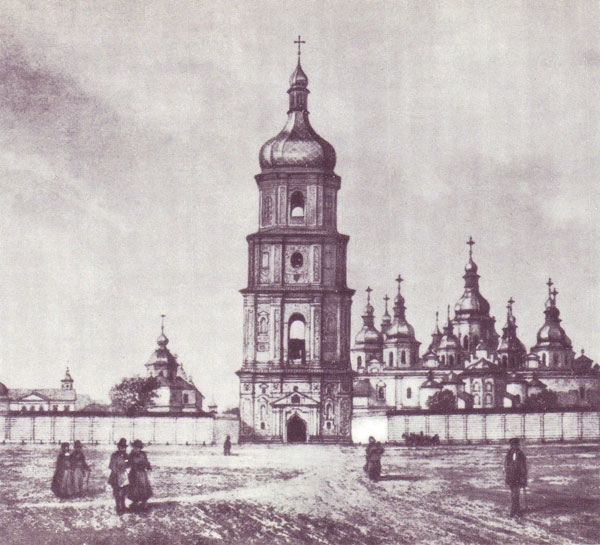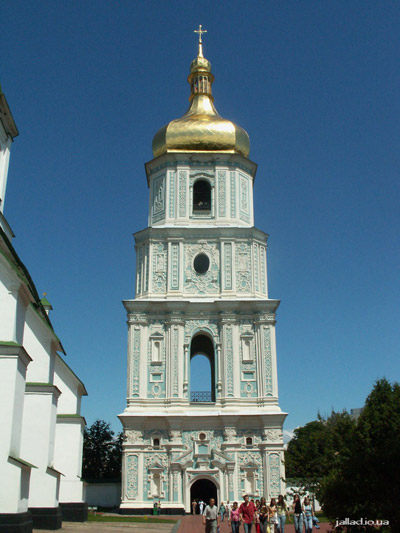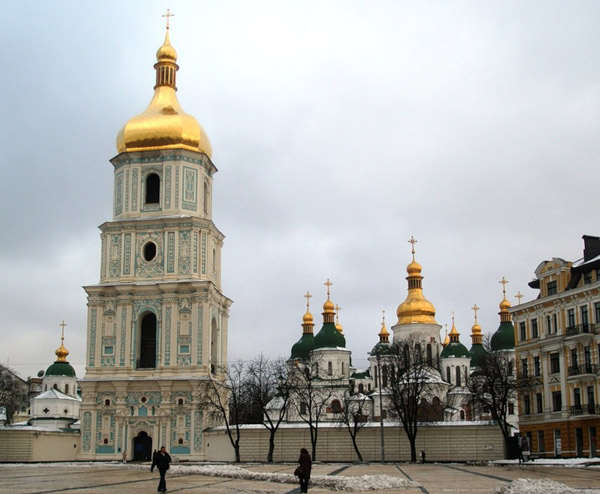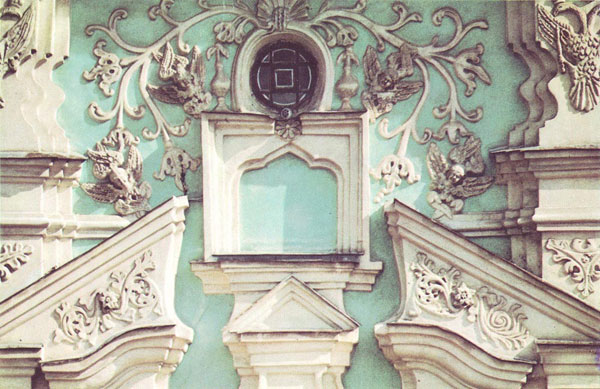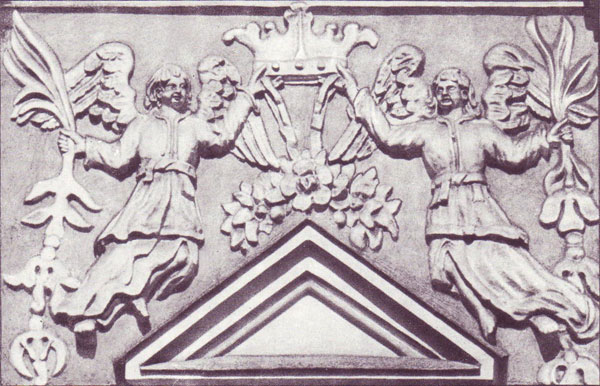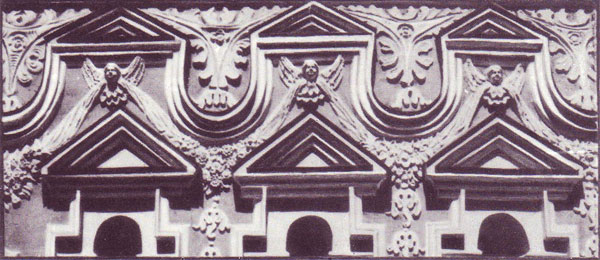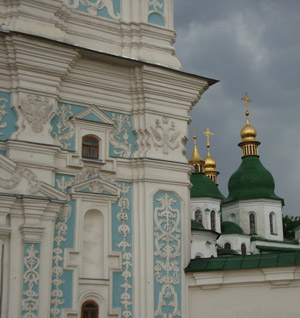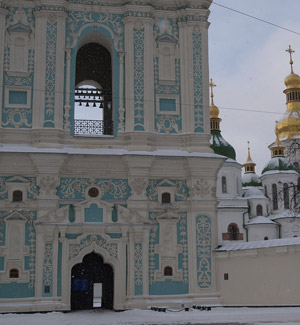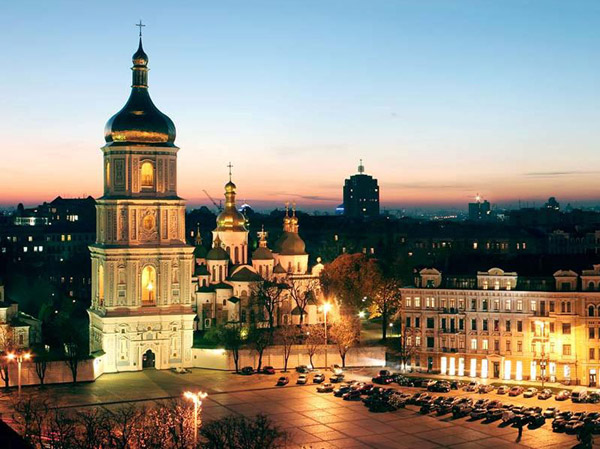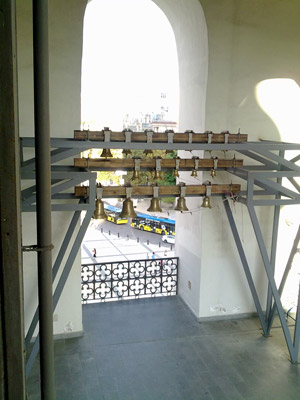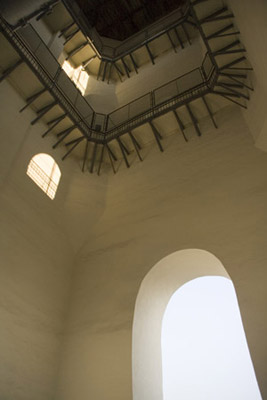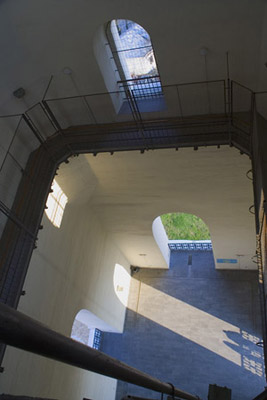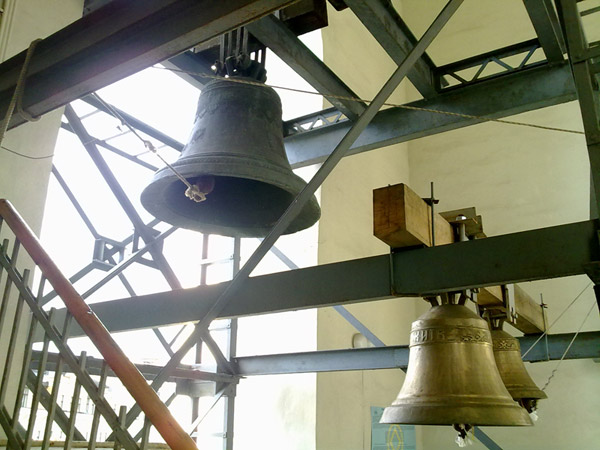ua. ru. en.
Museum ST. SOPHIA CATHEDRAL
Historical information
Plan of museum
ST. SOPHIA CATHEDRAL
Narthex
Architecture and murals
- Plan, Ground floor
- Mosaics
- Frescos
- Graffiti
- other details
Sarcophagus of Yaroslav the Wise
North cloister
Towers
Lofts
- Plan, First floor
ARCHITECTURAL MONUMENTS OF THE 18TH CENTURY
Bell Tower
Seminary
Cells of the Cathedral Elders
Metropolitan's Residence
Refectory
Consistory
South Entrance Tower
Zaborovsky Gate
First Rus library
BRANCHES OF THE MUSEUM
|
|
Excursions Kiev
weekend in Kiev
trip to Kiev
Excursions
tours to Kiev
Sights of Kiev
BELL TOWER
The high bell tower dominates the entire grounds of the St. Sophia Museum. Its site on the east side of the cathedral was dictated by the historical topography of Kiev: from an architectural point of view it was necessary that it face St. Sophia Square (now Bogdan Khmelnitsky Square). The Bell Tower was the first brick building to arise on the grounds of the St. Sophia Monastery after the 1697 fire. It was built from 1699 to 1706. In 1709, the victorious army of the Battle of Poltava, led by Peter I, was given a triumphant reception near the bell tower.
The original bell tower had three tiers. The architect is unknown: one document preserves only the name of Savva Yakovlev, 'under-master of stone masonry', who took part in the construction. Soon after it was completed, the upper tiers began to collapse due to an earthquake. From 1744 to 1748, the building was restored under the guidance of J. Schadel, a famous Petersburg architect. The two upper storeys were dismantled and replaced by new structures. Gifted Ukrainian artisans from Zholkva, Ivan and Stepan Stobensky, worked on the plaster embellishments of its walls. The new tower also had three tiers. It was crowned by a baroque dome topped by a tall gilded spire.
St. Sophia Monastery. Drawing by M. Sazhin. 1840s:
St. Sophia Square in Kiev. Lithograph by an anonymous artist. Mid-19th century:
By the turn of the 19th century, the bell tower was showing signs of serious deterioration and in 1807 its cupola was struck by lightning and burnt down. It was restored in 1812 but given a new architectural design. By the mid-19th century, due to the erection of high buildings in adjacent districts, the bell tower began to lose its position of prominence over the square. Thus, in 1851 -1852, the fourth tier was built to the design of architect P. Sparro. It was crowned with a wooden pear-shaped dome covered with copper gilt, and its basic form remains the same today. In the 1950s and 1970s, the bell tower underwent capital repairs and the dome was newly gilded.
The Bell Tower. View from the west:
The Bell Tower. View from the east:
The bell tower is 76 metres high. It is built in the shape of a stepped pyramid of four tiers, gradually decreasing in size to the culmination point of the dome. The two lower tiers are rectangular in plan, the two upper octagonal. The wide vaulted entrance-passage is centred in the ground-floor tier. Directly above, there is an enclosed chamber which is reached by way of a spiral staircase built inside the thick masonry wall on the north side. The three upper tiers are without floors or ceilings and outside have large open embrasures set in the walls.
The architectural design of the exterior is of special interest. The tiered composition is emphasized by complex cornices. Flat ornamental pilasters arranged vertically on the tiered facades enhance the building's graceful lines. The sculptural ornamentation with opulent and variegated motifs is particularly striking: there are masques, cupids' heads, doubleheaded eagles, medallions, acanthus leaves, grape clusters, bouquets and garlands of flowers. The first tier of the bell tower is remarkable for its particularly rich architectural and plaster embellishments, and testifies to the strong influence of the Ukrainian folk art. The sculptured portraits in rectangular frames on the walls of the third tier represent Prince Vladimir Svyatoslavich and the Apostle Andrew the First - Called (east facade), and the Apostle Timothy and the Archangel Raphael (west facade).
The plaster decor of the bell tower was executed by very dissimilar means. The bas-relief decorations were hand-moulded from lime mortar directly on the walls. Those in high-relief (masques, figures, etc.) were moulded separately from the same mortar with added alabaster, then attached to the walls by hammered nails. The ornaments of the fourth tier are standard repetitive details that were moulded of alabaster and attached to the walls by nails. The vertical panels of the facades with their decorative niches of various forms and the superb perfection of the architectural decor create a delicate play of light and shade that makes the bell tower exquisitely picturesque.
The Bell Tower. Detail of the decor:
The bell in the second tier (first floor) was cast in 1705 by Afanasiy Petrovich, a gifted Kiev artisan. The bell is decorated with luxuriant plant ornamentation, with a wide frieze around the neck and a narrow band encircling the lower rim. It weighs about 13 metric tons, and is a valuable relic of early 18th-century casting in the Ukraine. The original colour scheme of the bell tower was polychromatic: the vivid multicoloured stucco images and decorations on a cobalt blue background were reminiscent of folk decorative art. After the reconstruction carried out in the 18th century, the facade was given the bi-colour scheme which it bears to this day. The white alabaster ornamentation on a turquoise background and the golden dome always make the bell tower look fresh, festive and triumphant.
The St. Sophia Bell Tower is a brilliant example of Ukrainian 18th-century architecture. Its graceful, airy contours give it an originality that makes it stand out from the surrounding buildings and adds distinction to the city image.
Inside the Bell Tower:
 Mosaics and frescoes of St. Sophia Cathedral IN KIEV
Mosaics and frescoes of St. Sophia Cathedral IN KIEV
Virtual tour around the museum’s grounds of Saint Sophia Cathedral
National Historical Reserve "St. Sophia Cathedral in Kiev"
Address: Vladimirskaya Str. 24, Kiev Ukraine
Underground station "Golden Gate".
Hours: 10:00 - 17.30
Closed: Thursday
